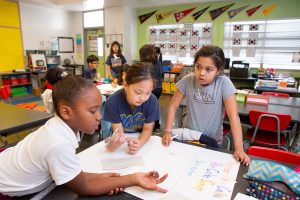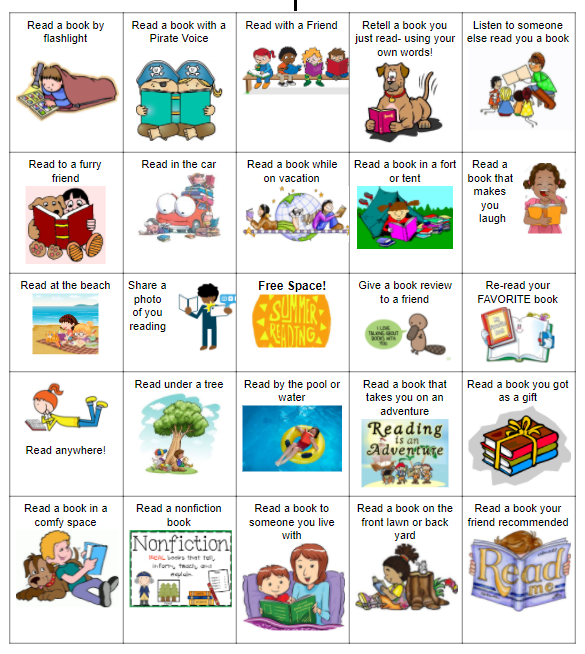TL;DR:
- Reflect by creating a visual timeline, class memory book, or slideshow.
- Culminating projects to show what students learned during the year include a book sales pitch with their favorite books showcased, summer or year-end BINGO cards, or a game of Family Feud.
- Proper closure to the year is important. Some ideas include writing a letter to their next year’s teacher or a letter to the new students that will be in your class. Another idea is to write compliments to each other.
- Remember to reflect on what you’ve done, what you’d like to change, and set goals.
Reflecting on the End of the Year
This past year has been the most unprecedented, unique, and stressful school year. We may be experiencing feelings we have never encountered before as we begin to say goodbye to the school year, including sadness, anger, grief, anxiety, and relief. We need to be able to acknowledge and understand that saying goodbye during a pandemic is going to look and feel different than before. We’ve connected with students and families more than we have in a typical school year. It is going to be bittersweet as we prepare to head off for a much needed, relaxing summer to recharge.
Here are a few ideas to keep your students engaged as you wind down and bring closure to the 2020-2021 school year.
Reflecting on the End of the Year: REFLECT
As a class, you have had an emotional school year. You may have been face to face all year with all of the necessary precautions, you may have had a few false starts to being together in the classroom, you may have been hybrid, virtual or even streaming in order to reach students near and far. I can’t think of a better year to use the power of reflection to bring the year to a close.
Create a Visual Timeline
Whether in person or remote, you’ve done a lot this year. Have students recall favorite moments, lessons learned, experiences, funny things, or highlights they want to remember. Students can create these as a class, in small groups, or individually. You can create chart paper lists for each month to display around the classroom, assign students individual slides, or use Jamboard to gather everyone’s ideas.
Put Together a Class Memory Book
This is a great way to use any photographs you have from the year or have students draw a few of their favorite moments. Students could Sketch Note something they learned this year. Students could also create, “I remember learning” illustrations, slides, doodles, and bullet lists. Compile all of these into a memory book that students will treasure in the future when they look back on the year they went to school in a pandemic.
What We’ve Learned Slides
The class could also use their new technology skills to put together a slideshow for the end of the year of everything they’ve learned. Designate certain slides for specific topics and have students add what they learned about that topic. They can add text, doodles, and pictures. This slideshow could be shared with families to show how much students did learn this year. It can also be used to show your incoming students what they have to look forward to learning. This could be sent out to your new students before school begins or used during a ‘step up’ day.
Celebrate all that you have done and head off into summer vacation ready for some rest and relaxation. Share on X
Reflecting on the End of the Year: CULMINATING PROJECTS

One of my favorite activities at the end of the year is to have students work in collaborative groups on a project of their choice that allows them the opportunity to see how much they have learned and put their new skills to use.
Book Sales Pitch or Commercial
We all want students to read over the summer. There are tons of summer reading programs available through school, the local library, and Barnes & Noble just to name a few. I love getting my students excited to read during their summer.
Have students choose one of their favorite books. This could be a book they read this year or even an all-time favorite. Students then create a book sales pitch or commercial to tell other students why they should read the book. Students revisit the characters, setting, and the problem, and use this information to give just a taste of what is in the book. The goal is to get others so excited they can’t wait to find out what happens!
You could even pair this activity with a Summer Reading BINGO.
I create a BINGO board and in each square is a different reading activity. Some of those activities could include: reading to a pet, reading under a tree, reading in a fort, reading by flashlight, reading at the beach, reading to a stuffed friend, and so on. Students cross off squares as they meet the reading challenge. Some students even share photos to go with their BINGO boards. Students return the completed BINGO boards at the beginning of the next school year for a new book or other token of recognition for their reading.
(Here’s a link to check out last year’s Summer Reading BINGO Board)

Speaking of BINGO, you could create a Year in Review in BINGO.
After reflecting on the school year, students can decide which learning they want to highlight and use it to create individual BINGO boards. Students who have the highlight on their board when it is called could share a connecting idea to that topic from what they learned.
Family Feud
Students enjoy this version of Family Feud. Using the reflection of what students learned during the school year, students create surveys and compile the top answers. The teacher then uses all of these different surveys to put together the games. The teacher reads the questions and has the student(s) share what they think the most popular answers were. For in-person students, they can hold up their answers written on a white board and students at home can hold them up to the camera or use the chat function. This may also be fun to do on a Jamboard. The teacher reveals the top answers after all students have shared their answers.
Reflecting on the End of the Year: CLOSURE
This has been a rollercoaster of a school year. Students have had a wide variety of experiences and feelings. Some students will be excited for summer and moving on to a new grade level while others are anxious about what summer will be like for them. It’s important that we provide students with an opportunity for closure at the end of the school year.
Write Letters
Writing end-of-the-year letters is one of my favorite activities. You can choose to do one or both of these writing activities. Have students write letters to next year’s teacher. This gives students time to reflect on their own school year. What goals they may have had for themselves, success or challenges that they faced, and maybe how they learn best. They can tell their new teacher anything they want them to know about themselves. They can share their likes and interests. What they hope to learn the following year.
Students can also write letters to students that will be coming into that grade the following year. They get to tell students what they have to look forward to learning, any traditions, special programs, or some of their own favorite memories. These letters can be shared with incoming students during step-up day or on the first day of school.
In addition to the letters, students could also create a class information book or slides that tell them what to expect coming into the new grade.
Compliments
Students are often saying goodbye to each other as well. They’ve learned, laughed, grown, and connected with one another over the past school year. They’ve gotten to know each other well. I love having students share compliments and kind words with one another. I always do an introduction to this project by discussing what compliments are and are not. We do some practice compliments or share words of kindness.
I want to make sure that students are sharing appropriate compliments with each other. I want this to be a positive and uplifting activity for all students. This can be done virtually using a slide or Jamboard for each student. The slide is labeled with the student’s name and the other students add a compliment or kindness to the slide. You could even take all of these compliments and create a word cloud that you could send to students as an end-of-the-year keepsake.
In-person students can use cut-out hearts, stars, file folders, or pieces of paper folded into the needed number of squares and pass these around for students to write a compliment or words of kindness. I’ve had students sit in a circle and we pass them around until everyone has had the opportunity to add something to everyone’s paper.
[scroll down to keep reading]
Don’t Forget About Yourself!
Don’t forget that this has been a challenging yet rewarding year for you. As an educator, you may have grown in many ways, reflected on how you’ve done things in the past and what you want to change in the future.
Take this time to sit and reflect on your year. Celebrate YOUR own success from this year. Remember the challenges that you’ve faced and use those to set goals for next year. It’s amazing to see how far you have come in the past year while learning to teach and live in the middle of a global pandemic. There are silver linings amongst the clouds and lessons to be learned.
Another strategy is to write a letter to yourself and list your top 10 successes of the school year. You could even take it a step further and make a couple of different top 10 lists for yourself (top 10 things to stop doing, top 10 things you want to keep doing, the top 10 things you want to tweak for next year, the top 10 things you’ve learned and so on!).
Congratulations on surviving and thriving in the most unprecedented and unpredictable year we have ever had in education (and our own lives). There’s much to be grateful for. We need to make sure we share those as a school and classroom community. The end of the school year is going to be welcomed while also bringing anxiety into the summer due to so many unknowns and another change in routine. Use these activities to bring some closure for your students. Celebrate all that you have done and head off into summer vacation ready for some rest and relaxation.
About Bobbie French
Bobbie French is an educational leader, presenter and writer from Massachusetts.
Bobbie has been an educator for over 24 years. She has been an elementary guidance counselor, classroom teacher, special education coordinator, Title I Director, Preschool Director and Administrator.
Bobbie is passionate about focusing on the whole child and creating an environment where all students have a sense of belonging. She appreciates and recognizes the hard work of teachers, and is committed to supporting others to be their best for kids every day. Her passion and enthusiasm for creating a positive and engaging school culture is contagious.
Bobbie is also an avid photographer and loves to tell her school’s story.



